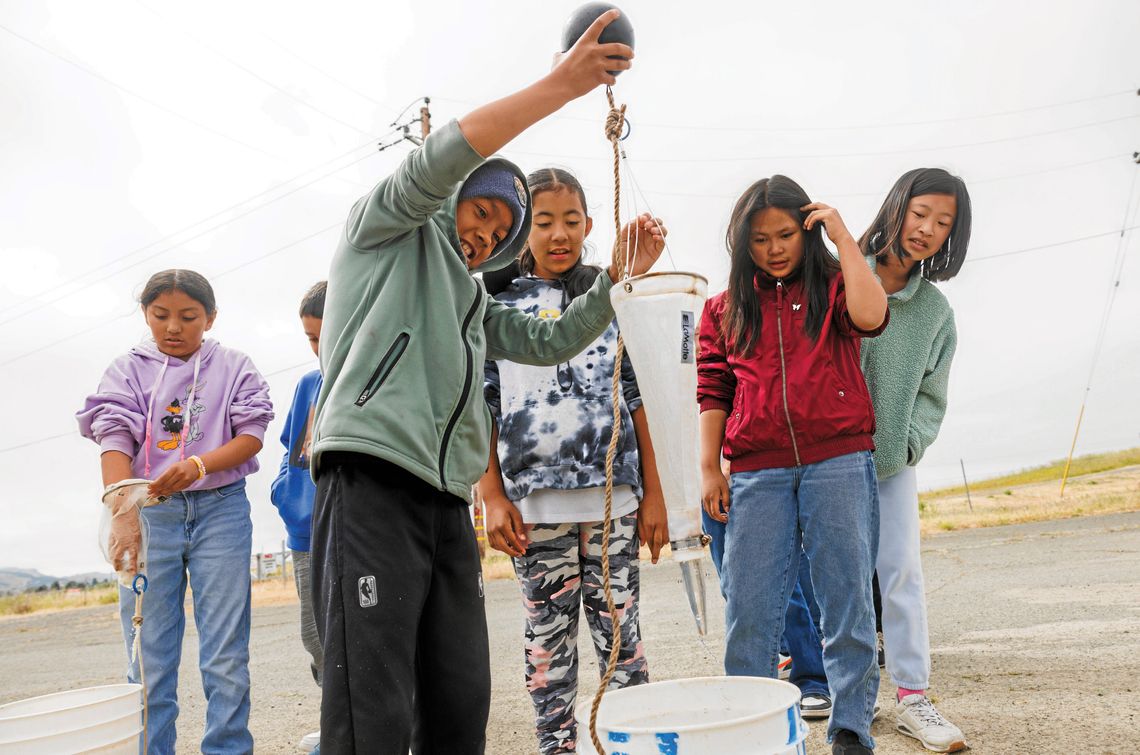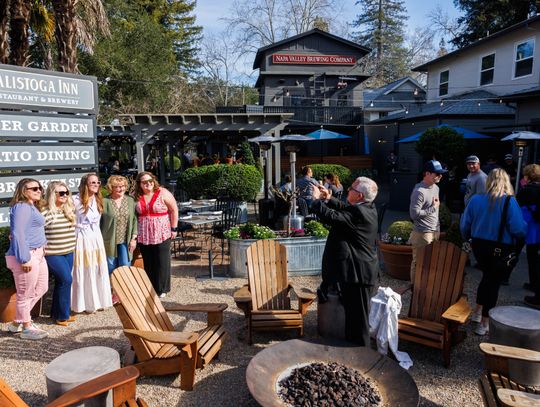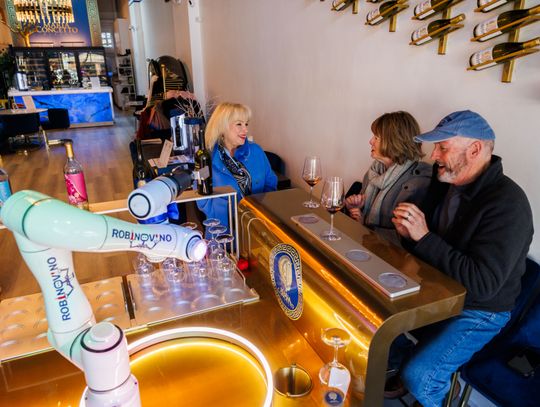About 60 young “watershed explorers” came to the south Napa County wetlands where avocets stride along mudflats, salt marsh harvest mice hide amid pickleweed, and plankton teem in murky waters.
Where better to learn about the marsh than in the marsh? That’s the approach taken by the American Canyon Community & Parks Foundation’s Watershed Explorers program.
Donaldson Way Elementary School fourth-graders participated. They came to an area once known for its dump, wastewater ponds and salt ponds, before the government spent millions of dollars to restore historic wetlands.
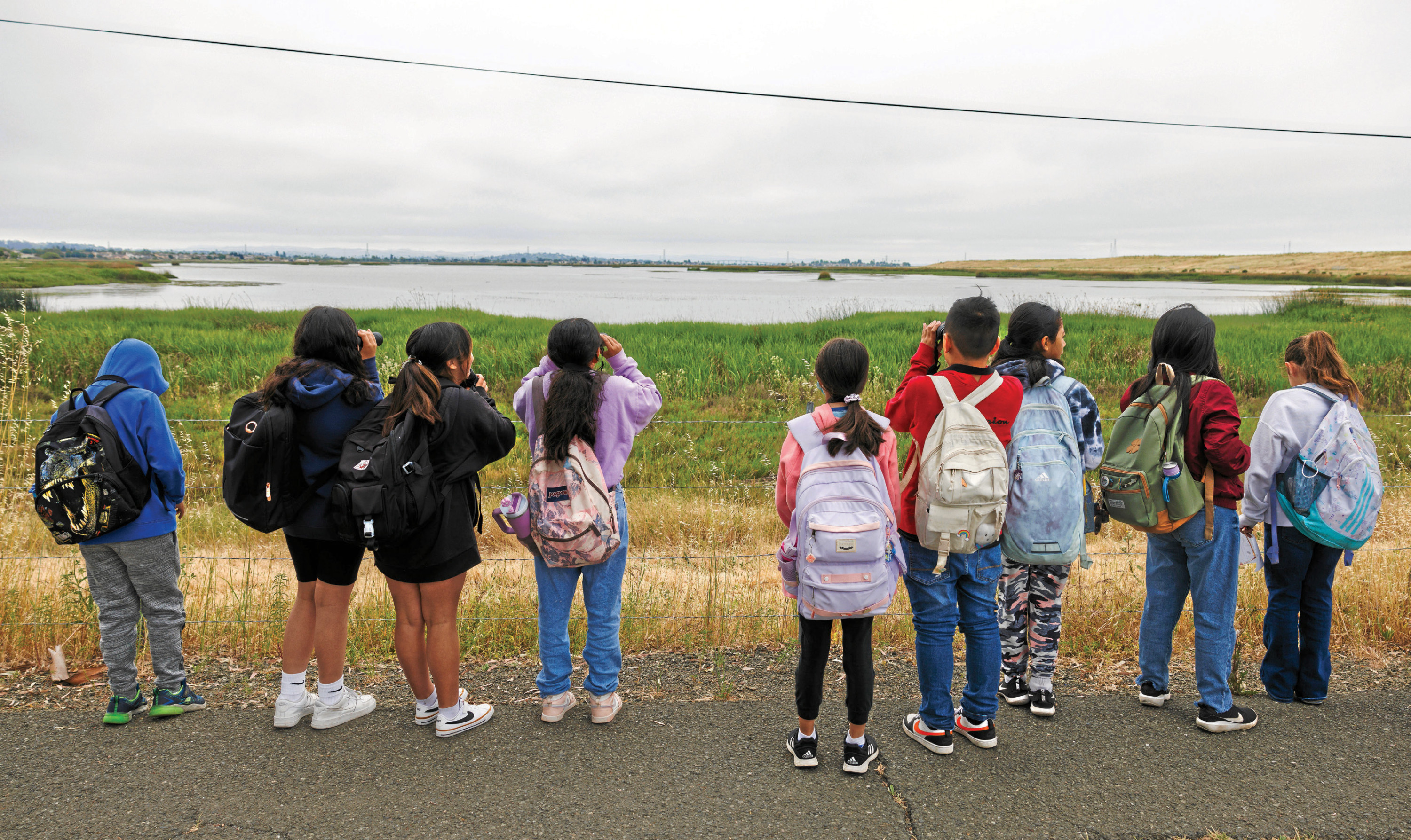
Student Arhum Khurram peered through a magnifying device at water taken from an adjacent, mossy pond. He consulted pictures and guessed he had found a riffle beetle.
“It does look like a riffle beetle,” Jessica Ardizzone of the Napa County Regional Park and Open Space District told him.
Hidden in those pond waters are an array of macroinvertebrates. These small organisms without backbones can range from dragonfly nymphs to mosquito larvae.
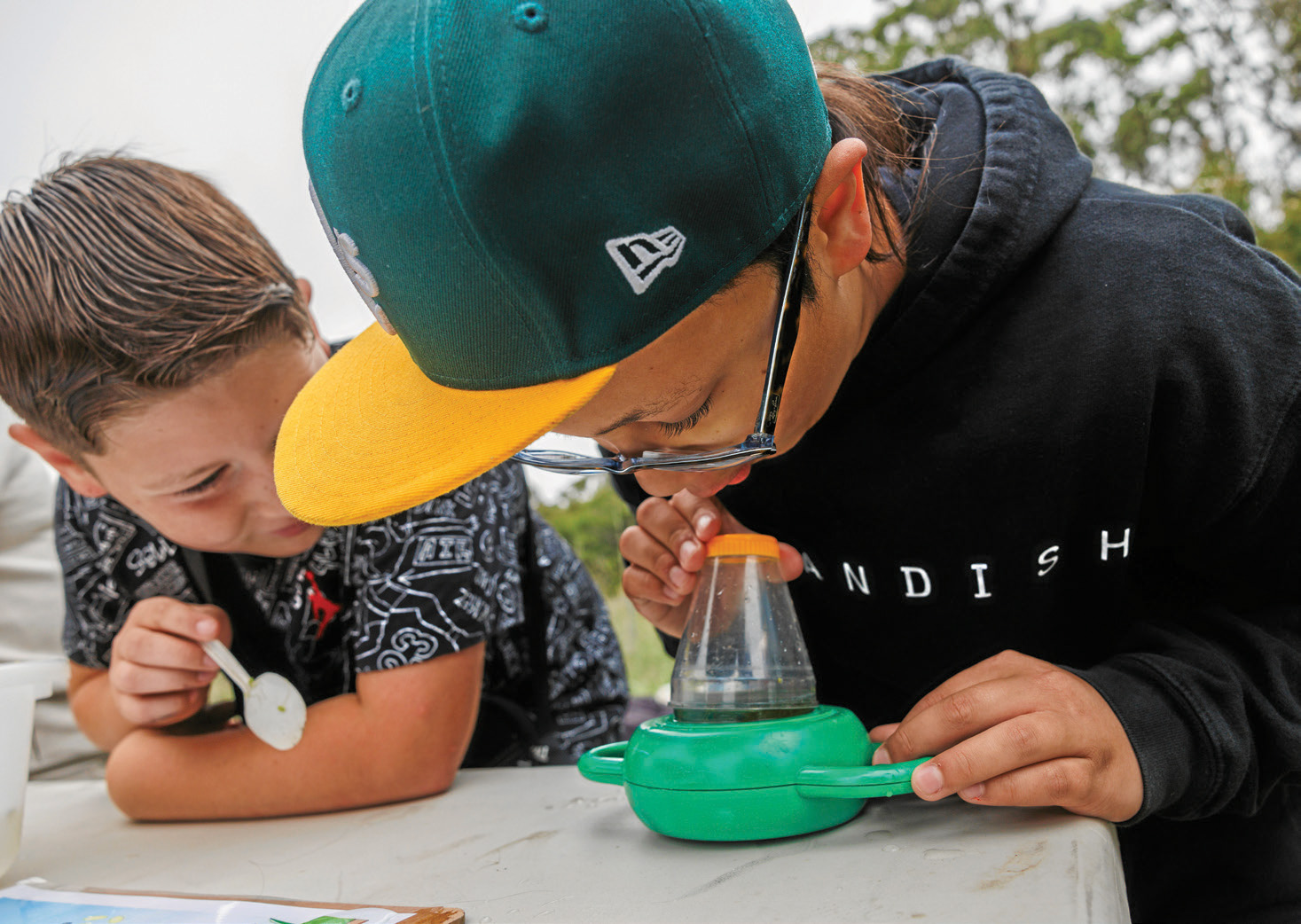
At another learning station, student Annaliyah Hernandez looked at tidal wetlands trying to find birds. She found ducks, nothing exotic.
Timing plays a role in birdwatching here. Tammy Saunders of the Napa Solano Audubon Society said that once the tide fell and the waters became shallower, the shorebirds would come out.
At a third learning station, Danielle Ashton of the Napa County Resource Conservation District talked to the fourth-graders about plankton.
“That’s the type of plankton you see on ‘SpongeBob,’” she said, pointing to a chart. “And it’s called a copepod.”
And at a fourth station, Mike Lombard and Melisa Guillen of the city talked about American Canyon’s nearby wastewater treatment plant.
They showed a jar full of gunk called a fatberg, which is formed by such things as grease and oil and can clog up the sewer.
This little fatberg was nothing like the one discovered in an England sewer in 2021 that was a half-mile long.
Don’t put grease down the drain, Lombard urged the students.
Students reflected on their favorite part of the American Canyon wetlands.
“I like walking,” Arhum said, and he has plenty of company, given the number of people who can be seen strolling on the miles of trails there.
“It’s like really fun and cool how you get to see nature,” said Steve Charrette, who had just seen some birds he believed to be doves and bluebirds.
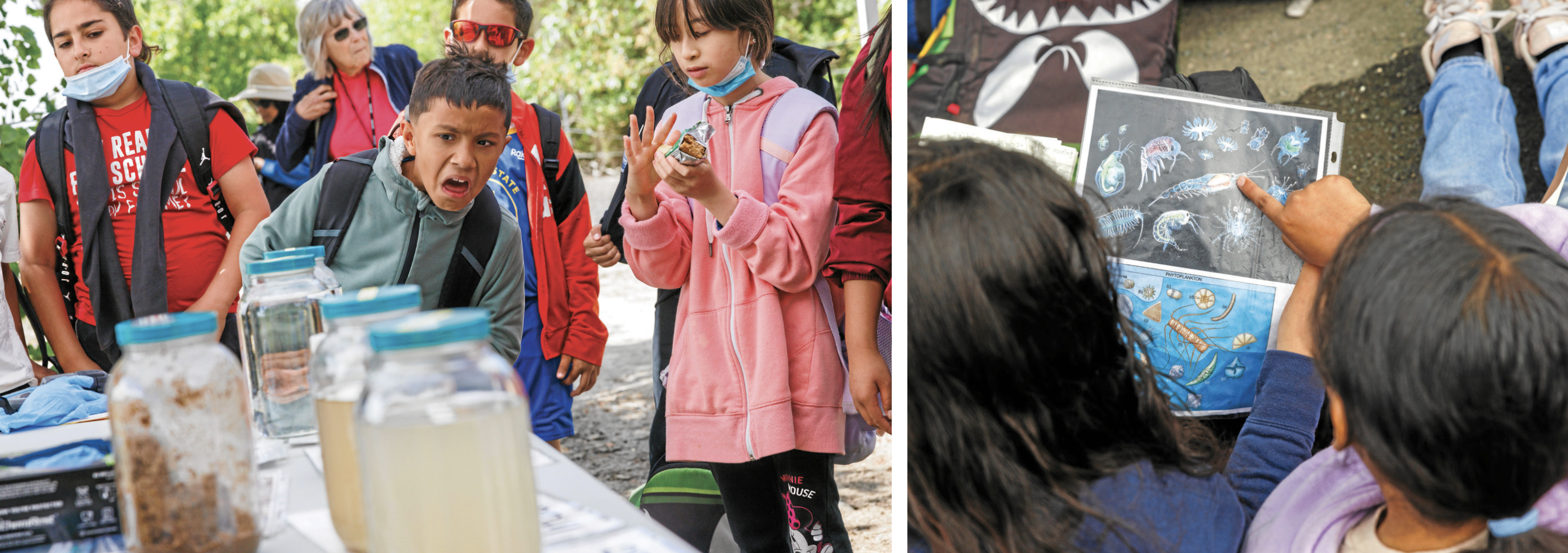
Annaliyah singled out the animals and the birds. “There’s beautiful stuff here,” she said.
Watershed Explorers is in its third full year, according to Janelle Sellick, executive director of American Canyon Community & Parks. The program serves about 300 fourth-graders.
There are three parts to the Watershed Explorers course, said Joy Hilton, the foundation’s education program director. Students learn about the Napa River watershed in the classroom and practice writing in a nature journal. Then they have the field day in the marsh. Then they visit the foundation’s mobile wetlands classroom.
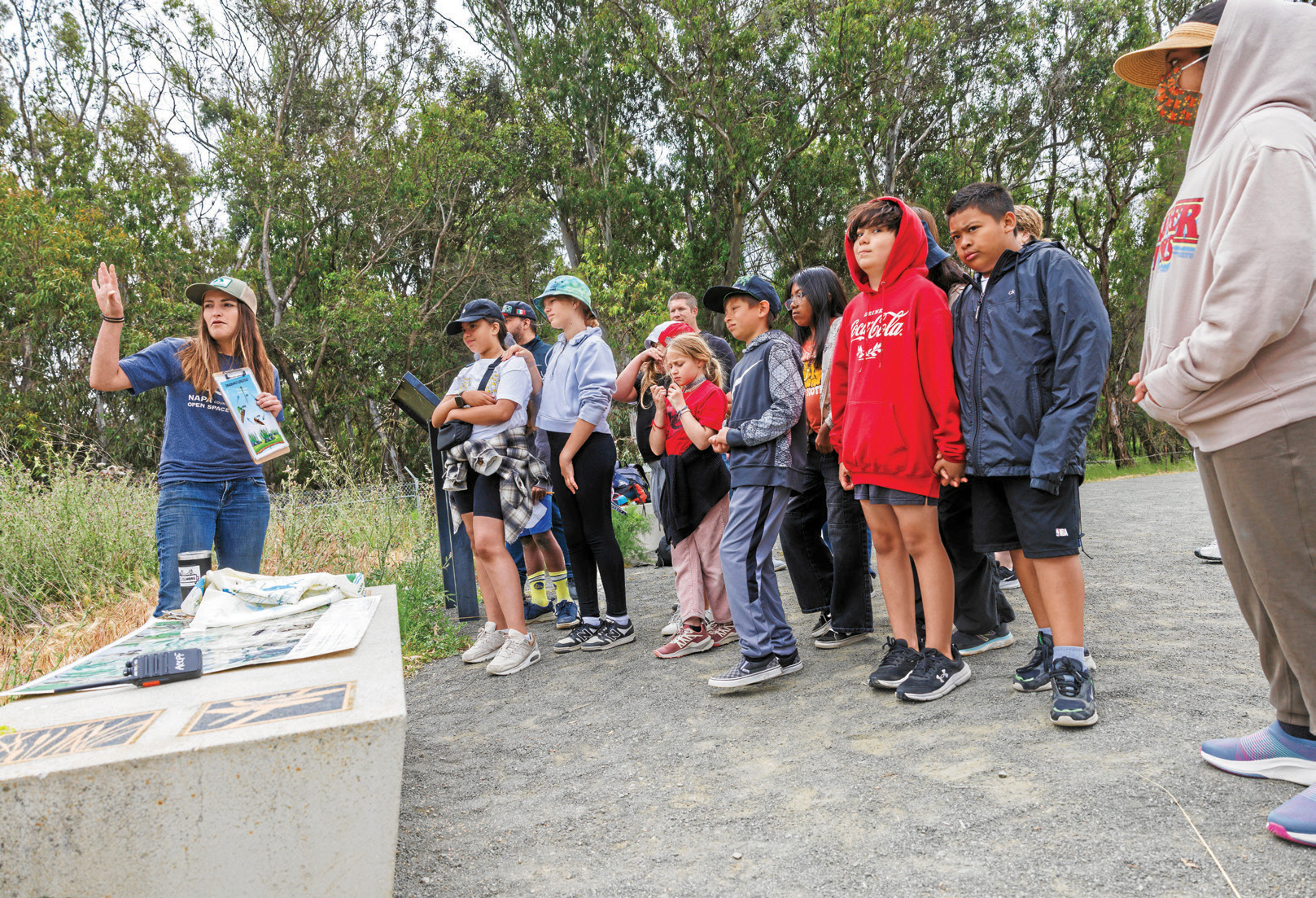
Unlike the Watershed Explorers, many people in the pioneer-era mid-1800s didn’t see a regional wetlands wonderland to be treasured. They saw a smelly, mosquito-breeding swamp taking up valuable space, so they put up levees to create dry farmland.
By the 1980s, much of the area to the west of American Canyon no longer looked like a welcoming place for the clapper rail or other creatures. There was a dump. Cargill harvested salt from a series of evaporation ponds covering 11,000 acres.
Cargill Salt shut down in 1989, selling most of its ponds to California in 1994 and still more in 2003. The dump last accepted trash in 1995.
Then the tide turned for Bay Area tidal marshes. Federal, state and regional scientists and officials in 1999 put out the Baylands Ecosystem Habitat Goals.
The Bay Area had seen 190,000 acres of historic tidal marshes shrink to 40,000 acres, researchers found. They said the Napa River area presented an “excellent opportunity” to restore large patches of tidal marsh near a river system.
Then began a massive, multimillion-dollar wetlands restoration effort that included having the state buy the old Cargill salt ponds and breach levees. Also, American Canyon restored some wetlands.
The area adjacent to American Canyon remained largely off-limits to the public until 2010, when the city opened a trail leading to the Napa River. In 2012, a loop trail around the closed landfill opened. So did a trail along former salt ponds, now once again under tidal influence.
American Canyon had a wetlands world where people could go to walk and bike — and, as in the case of the Watershed Explorers, to learn about nature.


